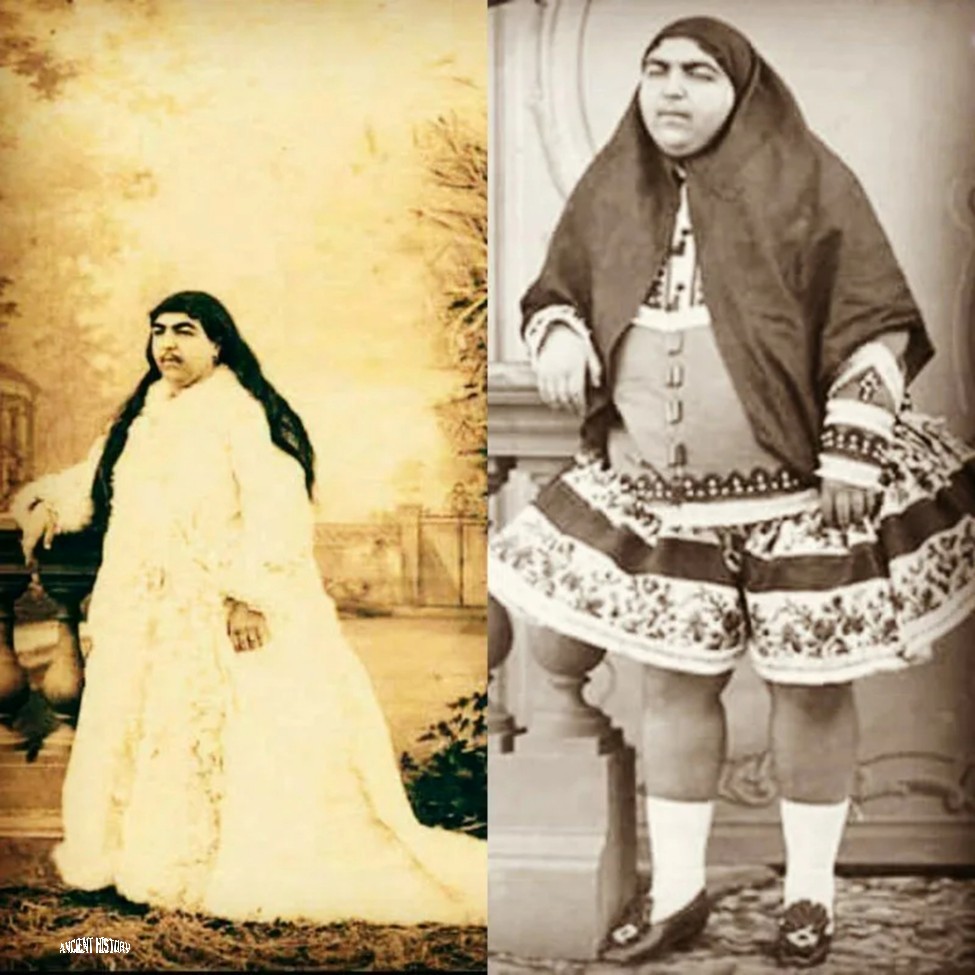In the late 19th century, during the Qajar dynasty in Persia (modern-day Iran), a princess emerged as a striking emblem of her era’s unconventional beauty standards and intellectual might. Often referred to simply as “Princess Qajar,” she has since become a poignant figure—one embraced by history and distorted by viral internet memes. This article untangles myth from reality, shining a light on her true identity, cultural impact, and lasting legacy.

Who Was the “Princess Qajar”?
The name “Princess Qajar” is a catch-all label attributed to two royal women: Princess Fatemeh Khanum “Esmat al-Dowleh” (circa 1855–1905), and Princess Zahra Khanom “Taj al‑Saltaneh” (1884–1936). Both were daughters of Naser al‑Din Shah Qajar, one of Persia’s most iconic monarchs en.wikipedia.org+9abitofhistoryblog.com+9allthatsinteresting.com+9.
- Princess Esmat al‑Dowleh, Naser al‑Din Shah’s daughter, gained fame for her refined appearance and social influence. Her portrait, often misrepresented online, depicts her with a delicate mustache—a common beauty trait in 19th-century Persia .
- Princess Taj al‑Saltaneh was a groundbreaking figure: feminist, memoirist, artist, and women’s rights activist. She authored Crowning Anguish, chronicling life inside the royal harem and her role in early Persian constitutional reform themindcircle.com+2en.wikipedia.org+2mundigak.com+2.
Beauty Reimagined: Persian Aesthetics vs. Western Standards Taj al‑Saltaneh memoir
Table of Contents
In Qajar Persia, norms of attractiveness markedly differed from Western ideals:
- Women celebrated soft facial hair—such as mustaches and strong brows—as hallmarks of femininity alamy.com+14abitofhistoryblog.com+14allthatsinteresting.com+14. Harvard historian Afsaneh Najmabadi notes how women even enhanced such features with cosmetics en.wikipedia.org+2abitofhistoryblog.com+2allthatsinteresting.com+2.
- Men, in turn, often prized smoother, more delicate features—reflecting a reversed aesthetic preference compared to contemporary Western culture alamy.com+14tiktok.com+14abitofhistoryblog.com+14.
Such cultural contrasts explain why modern audiences, unfamiliar with 19th-century Persian ideals, wrongly perceive these features as anomalies or gender-bending, rather than expressions of historical beauty.
Debunking the Viral “13 Suitors Suicide” Myth /Qajar dynasty beauty
One persistent myth claims 13 men killed themselves over unrequited love for “Princess Qajar.” This colorful assertion has proliferated through social media, but it lacks any historical basis pinterest.com+10abitofhistoryblog.com+10allthatsinteresting.com+10.
- There is no evidence in credible archives or memoirs supporting this dramatic tale .
- Moreover, as Taj al‑Saltaneh married at a young age and was part of a powerful royal household, it’s improbable she rejected multiple suitors in a way that led to such dramatic consequences abitofhistoryblog.com+4allthatsinteresting.com+4en.wikipedia.org+4.
This shows how viral misinformation can oversimplify and overshadow rich, factual histories.
Power Beyond Beauty: Scholarship, Reform, and Feminism /19th century Persian art
Behind the images lay impressive personal achievements—especially in the case of Zahra Khanom “Taj al‑Saltaneh”:
- She chronicled life in the Qajar court and advocated fervently for women’s rights allthatsinteresting.com+1abitofhistoryblog.com+1mundigak.com+3en.wikipedia.org+3themindcircle.com+3themindcircle.com.
- Her memoirs offer valuable insight into Persia’s constitutional revolution and early feminist thought historydefined.net+1historydefined.net+1.
- She co-founded Anjoman Horriyyat Nsevan, one of Persia’s earliest women’s rights societies, and publicly challenged social norms—such as removing her hijab in court themindcircle.com+1historydefined.net+1.
These accomplishments show she was far more than a viral meme—she was a cultural pioneer and intellectual force.
The Broader Influence of Qajar Art and Photography
The Qajar era was notable for a distinctive aesthetic in art and photography:
- Qajar portraiture combined traditional Persian styles with early European influences, showcasing intricate detail and vibrant color tiktok.com+9en.wikipedia.org+9pinterest.com+91stdibs.com.
- Naser al‑Din Shah championed photography, opening his court to photographers and using images to document royal life—including portraits of his princes and princesses en.wikipedia.org+3en.wikipedia.org+3mundigak.com+3.
These cultural advancements reflect the broader context within which both Esmat al‑Dowleh and Taj al‑Saltaneh lived and thrived.
Conclusion: Reclaiming History from Memes and Misunderstandings /Qajar women’s rights
The story of the so-called “Princess Qajar” is far richer and more nuanced than memes suggest. While images of mustached royal women captivate modern audiences, it’s their true roles in art, feminism, memoir, and reform that deserve recognition.
